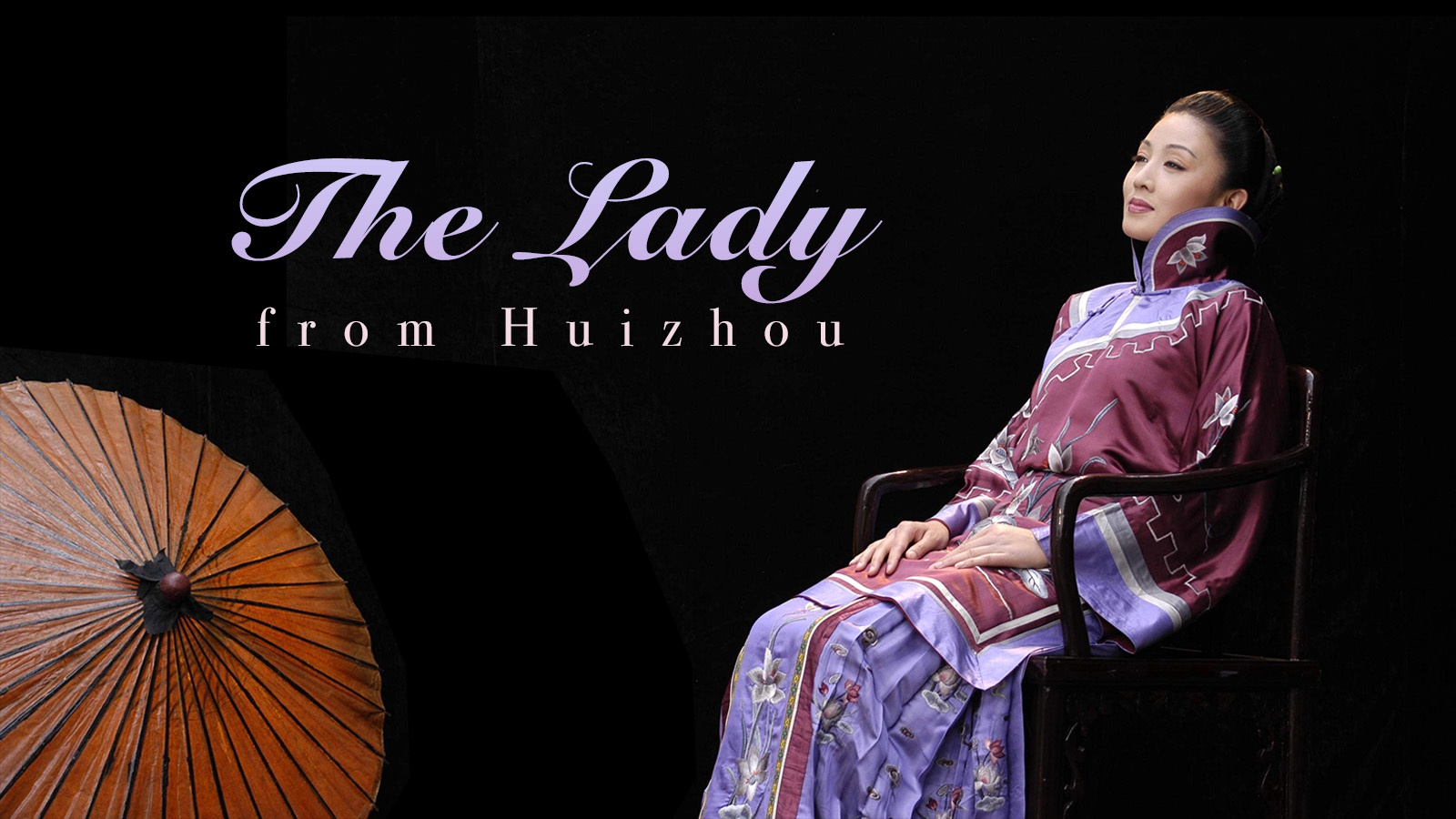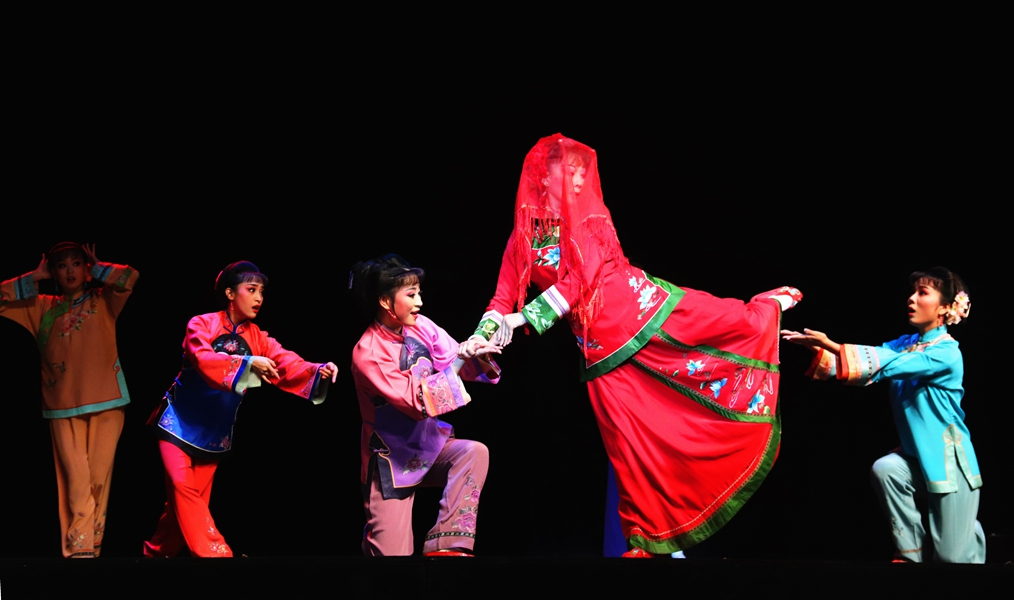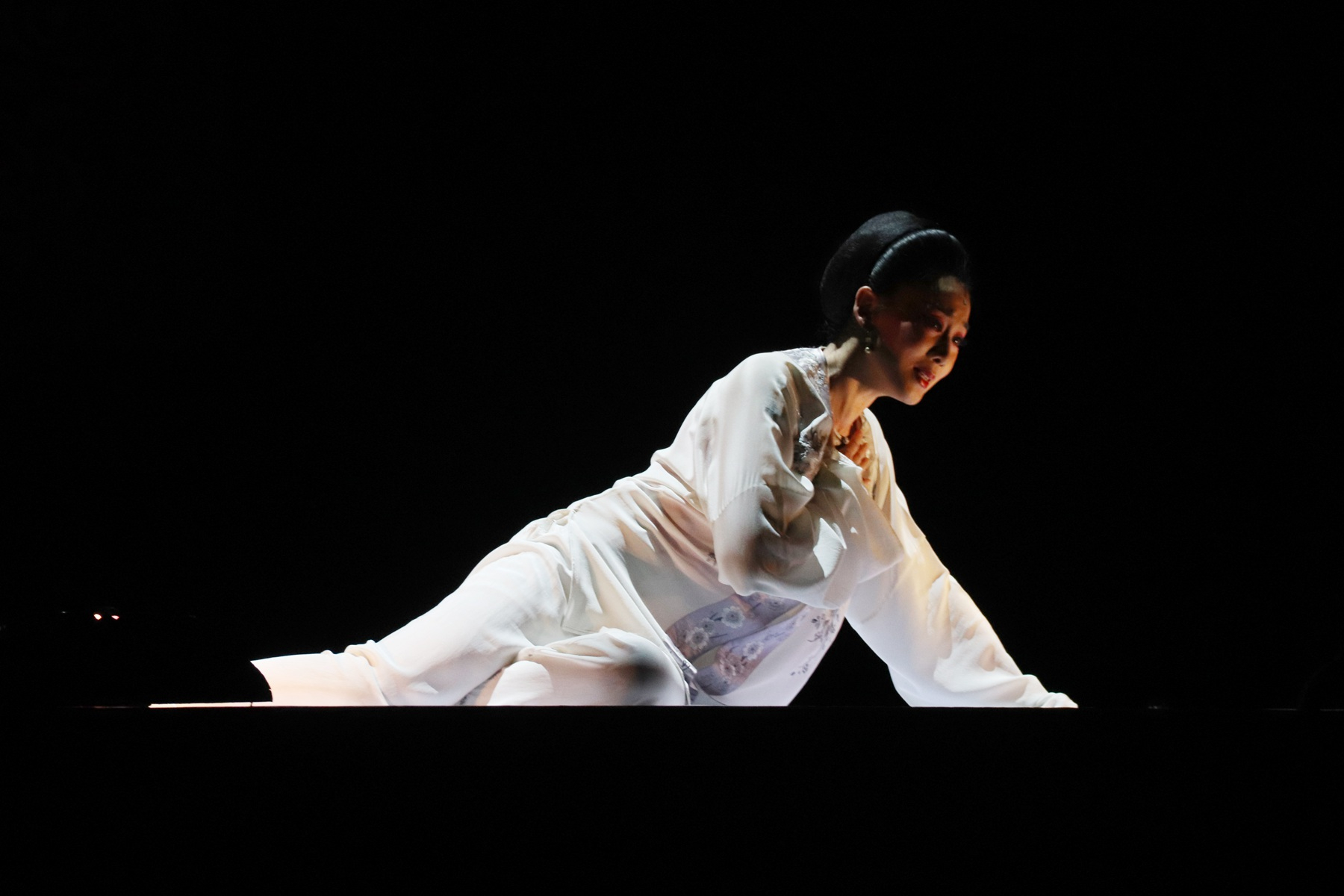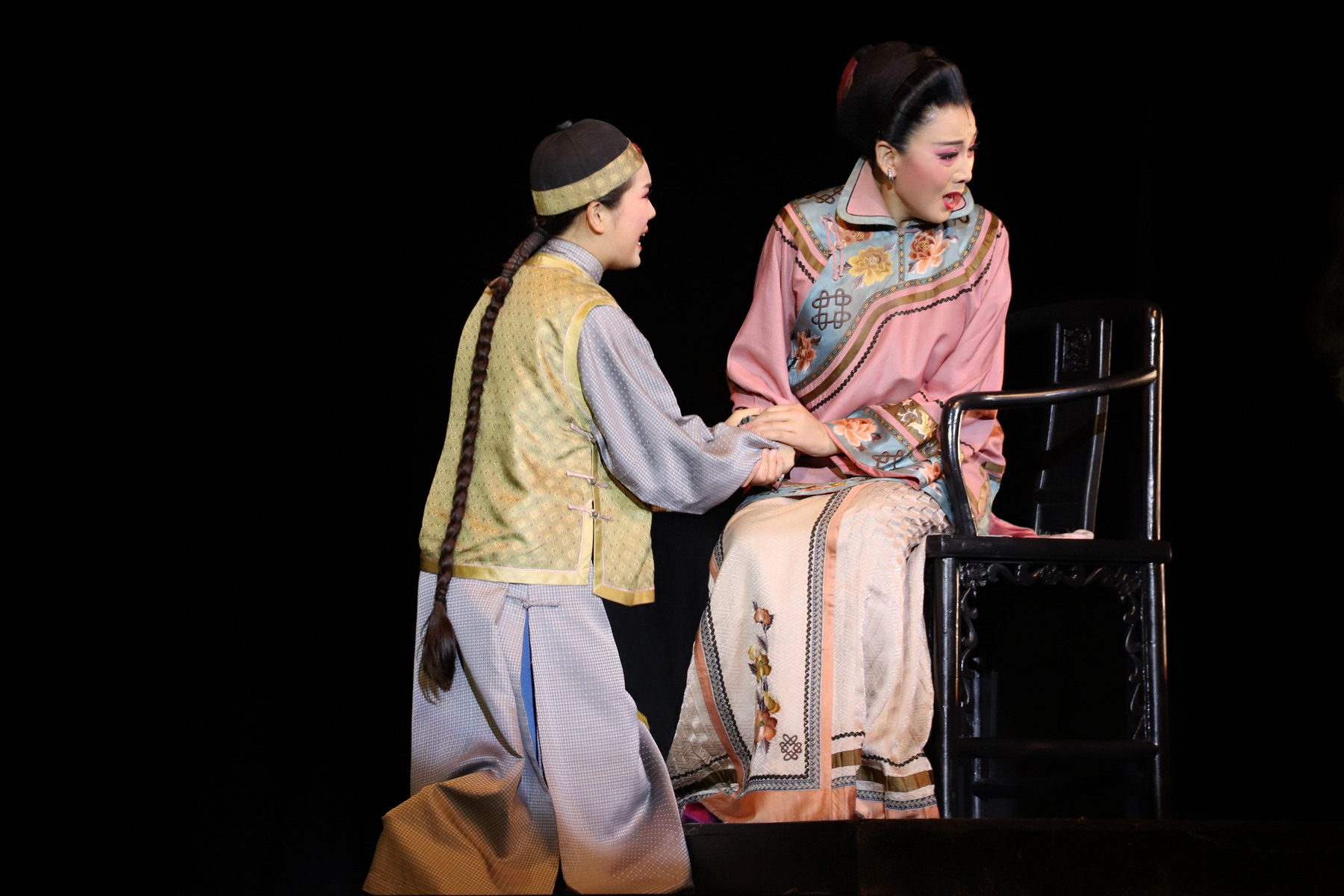03:44

Innovation is never far away from Huangmei Opera, which has been reinvented many times since it was born some 200 years ago.
"The Lady from Huizhou," produced by Huangmei Opera artist Han Zaifen and her troupe, is an example of the direction of the ancient artistic genre.
Twenty years since its debut, the opera was brought back to the stage of the National Center for the Performing Arts in Beijing from November 12 to 17.
Even after 20 years, it is still quite modern in every aspect.

A stage photo. /Courtesy to Han Zaifen's Huangpei Opera Troupe
A stage photo. /Courtesy to Han Zaifen's Huangpei Opera Troupe
Creativity in traditional operas
It was a bold movement back in the 1990s for Han Zaifen and her troupe members to update the traditional opera in their original production of "The Lady from Huizhou."
"When the opera was performed 20 years ago, it was quite controversial," recalled Han, adding there were two groups of people holding different stands.
"Supporters said it was good attempt, while objectors said it was not Huangmei Opera any more," said Han.
The story was set in the background of the late Qing Dynasty (1644-1911), when the society was going through radical changes. It depicted the story of a woman, who was abandoned after getting married. Bonded by the moral codes of the old time, she spent her whole life waiting for her husband in the small village.

A stage photo. /Courtesy to Han Zaifen's Huangpei Opera Troupe
A stage photo. /Courtesy to Han Zaifen's Huangpei Opera Troupe
Unlike the traditional Huangmei Opera, the story focuses more on the heroine's psychological changes – from her teenage years, longing for romantic love with her future husband to her later years. It is not only an essay of a woman's life at that time, but also the process of a woman's self-awakening.
The stage setting and lighting of the opera are quite modern. Several huge screens painted into the walls of Hui-style architecture, one of the traditional Chinese architectural styles distinguished by white walls and black roofs, hung down from the ceiling of the stage. They created the small town with Chinese ink-and-wash painting style, providing the perfect setting for the story.
The lighting also changed according to the main character's psychological state – when she was in a happy mood, the colors were light green and red, and when she was feeling desperate, the stage was immersed in cold white and blue.
Another big change to the art form was the ending. Instead of following suit with a happy ending, the opera has a brief yet powerful tragic ending, giving it even more strength.
Han has always been a supporter of innovation in traditional operas. She believes that preservation of traditional art is necessary, and yet that does not mean preserving it only in its old form.
"I think there is always a type of art that is boundless. In my opinion, Huangmei Opera is in a period when its artistic expressions are boundless," she said. "So why don't we try to make it modern for our times, and use it to present the life we live today."
Twenty years after its debut, "The Lady from Huizhou" has been generally accepted as a new classic.
"The charm of the art form is that at the end, it touches your soul," said Han. "A good production is always about humanity."
The history of Huangmei Opera

A stage photo. /Courtesy to Han Zaifen's Huangpei Opera Troupe
A stage photo. /Courtesy to Han Zaifen's Huangpei Opera Troupe
Huangmei Opera originated from a rural folksong "Picking Tea Song" in parts of what is today's Anhui, Hubei and Jiangxi provinces. In the late Qing Dynasty, the songs were combined and developed into the art form of Huangmei Opera, which is marked by its high pitch tone and sweet melodies.
Although its not as famous as Peking Opera, the Huangmei Opera is definitely one of the most popular genres of local operas among the Chinese people.
Instead of using dialects hard to understand, the dialect of Huangmei Opera was quite similar to Mandarin, and is accessible to almost everyone.
Most of the popular operas of the genre are based on folk stories or ancient legends with a long history, such as "Fairy Couple" and "The Female Prince Consort."
Reporter: Ai Yan
Videographers: Gao Shengwei, Zhang Xian
Video editor: Ai Yan
Cover image: Li Jingjie